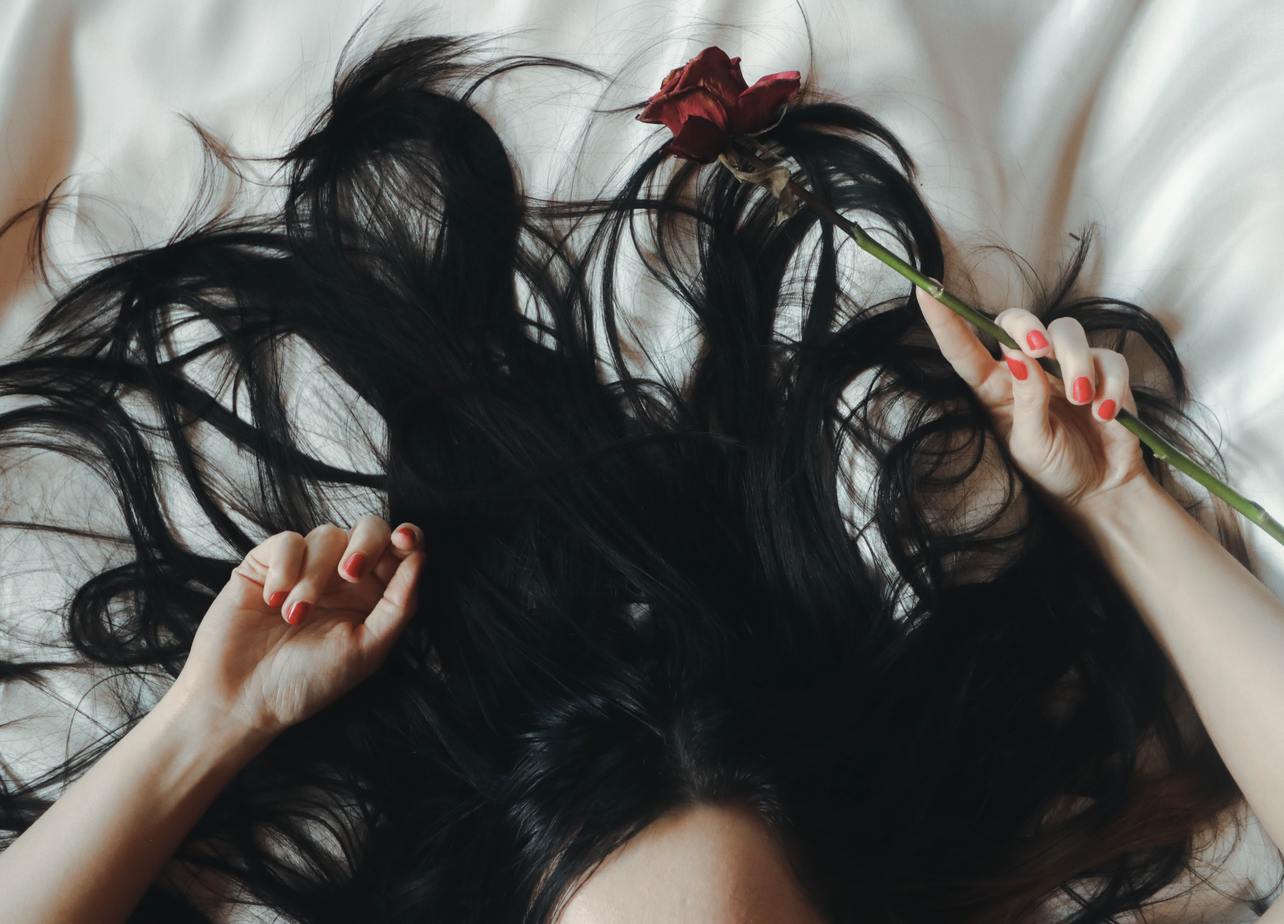
General speaking, dark hair is more dominant than light. But nowadays blonde is also considered very dominant.
Genetics are a big part of your hair color. It really makes you who you are and what’s special about you.
You’ve probably wondered what hair colors are dominant these days.
If you are interested in what the most dominant hair colors are, then please keep reading on.
Have you ever wondered what causes an individual’s hair color to either be black or blonde? Hair color is highly dictated by recessive and dominant qualities.
The terms, recessive and dominant, are used to refer to the inheritance patterns of particular traits. These qualities are often used to predict the likelihood of a person inheriting certain phenotypes, including disorders.
However, when it comes to determining or predicting a child’s hair color, it takes more than just considering recessive and dominant qualities.
This is because melanin, including other genetic factors, play a huge role in determining how light or dark an individual’s hair color is.
Melanin
When it comes to skin color, melanin has been found to be a determiner.
There are two types of melanin, which namely include: pheomelanin and eumelanin.
The two types of melanin, usually produced by a group of cells known as melanocytes, are what affect the color of our skin.
The same thing applies when it comes to hair color. Notably, genes are the major determiner of an individual’s hair color.
This is because the genes are what determine the amount of eumelanin present and hence, the hair color. More specifically, genes determine the type and amount of melanin that is present.
The well- known and most studied a gene that plays a part in hair color is known as MC1R.
According to numerous studies, the aforementioned gene is responsible for providing the instruction necessary to manufacture a protein known as melanocortin 1 receptor.
The melanocortin 1 receptor, in turn, controls the type of melanin manufactured and produced by melanocytes.
When the melanocortin 1 receptor is activated, it stimulates the melanocytes to produce eumelanin.
However, when the receptor is not activated, the cells (melanocytes) produce pheomelanin. The dominant melanin that is present is what determines the hair color.
Please note, that the melanocortin 1 receptor is not the only genetic variable that plays a role in hair color.
The more the eumelanin, the darker the hair color.
Therefore, the less eumelanin there is, the lighter an individual’s hair will be.
It is possible and completely normal for a person’s hair color to vary and change over time. This is usually because the level’s of melanin tend to vary and change over time.
Other factors, such as stress, age, and certain medical conditions can cause changes in hair color.
Additionally, environmental factors such as sunlight can lead to a change in hair color. This is because sunlight tends to naturally bleach out the melanin or pigment from our hair, making it lighter.
People that tend to spend a lot of time at the beach or swimming in the ocean not only need to worry about the sun bleaching their hair. Saltwater and chlorine have been found to act as contributing factors towards bleached hair.
This is why most people that live along the coast have lighter hair color.
Eumelanin and Pheomelanin
Individual’s with dark hair have large amounts of eumelanin, whereas, those with brown hair, have moderate amounts of eumelanin. Now, there are two types of eumelanin, which include dark and brown.
To be more specific, large amounts of brown eumelanin leads to brown hair.
However, low amounts of brown eumelanin lead to blonde hair. Large amounts of black eumelanin obviously lead to dark hair, whereas low amounts of the same type of eumelanin, leads to white hair.
Those with blonde hair have extremely low amounts of eumelanin, while those with red hair, mostly have close to none. Red or/ and orange-haired individuals usually have larger amounts of the pheomelanin instead.
Whereas eumelanin is either brown or black, pheomelanin is yellowish- red. This is the reason those with high amounts of pheomelanin have red hair.
Dominant Hair Colors
Dark and brown hair is dominant over lighter colored hair, which in this case, is either blonde or white hair. Brown hair often referred to as brunette, as well as blonde is considered to be dominant over red hair.
From the above information, it would be safe to include that the hair colors with more eumelanin present are dominant.
Black and/or brown haired individuals are the most common as compared to those with red or blonde hair.
Recessive Hair Colors
Recessive hair colors are the ones with less eumelanin such as red, blonde and light hair. Red hair makes up at least 1- 2% of the world’s population, while blondes make about one in 20 Americans. In other words, blondes make up at least 2% of the world’s population.
So both red and blonde hair colors are not very common, hence the reason many people ( mostly women) dye their hair.
Hair Color In Children
Hair color in children tends to change from birth. More often than not, the hair that a baby is born with tends to fall off after a while to make room for the new hair.
The new hair that grows in is the closest you’ll get to determine your child’s future hair color.
Another way of predicting your child’s future hair color is by looking back at how your hair color changes as you grew up. If you had blonde hair as a child that got darker the older you got, the more likely that your children’s will change too.
More often than not, the final hair color is usually at the age of 18. However, as previously mentioned, a lot of factors can still affect hair color even after the age of 18, including sunlight.
In conclusion, we like to associate personalities with hair color. For instance, those with red hair are considered short-tempered. However, there’s a lot more going on behind the scenes, thanks to genetics and melanin.



